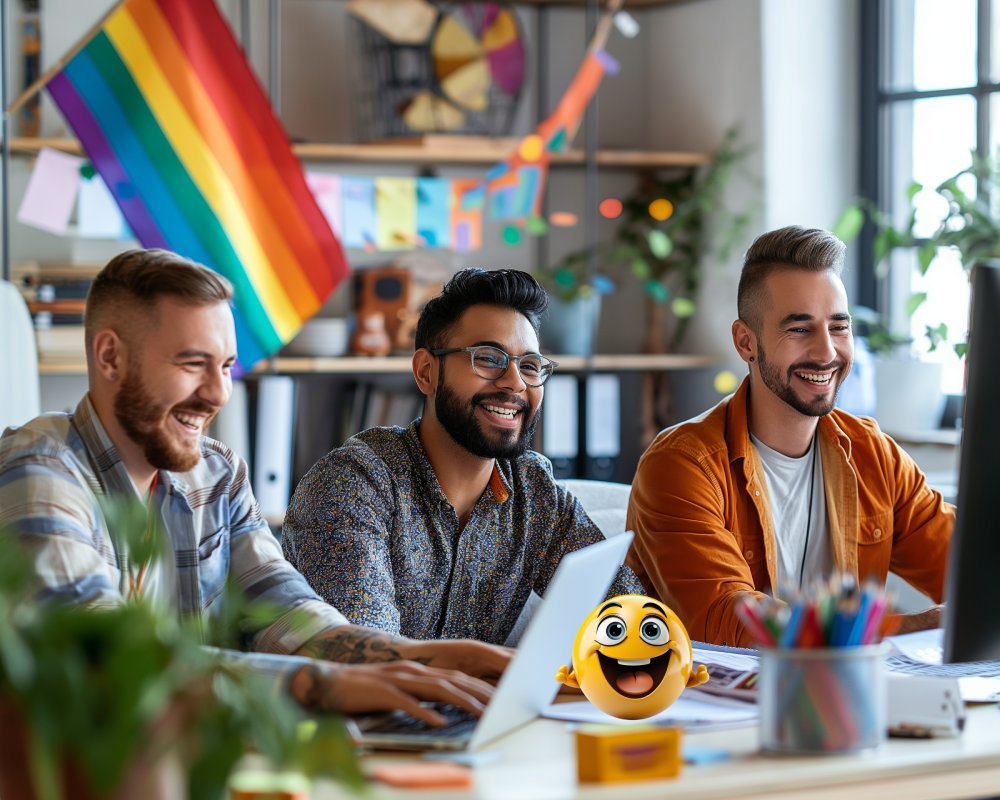
Blog Title: What Is Gay History Month? A Comprehensive Guide to LGBTQ+ History and Celebration
1. Introduction – What Is Gay History Month?
1.1. Defining Gay History Month
Gay History Month—often known as LGBT History Month—is a designated period set aside to celebrate the rich history, achievements, and resilience of the LGBTQ+ community. It’s a time to reflect on the social and political changes that have shaped the experiences of lesbian, gay, bisexual, transgender, intersex, and queer-identified individuals. Typically recognized in October in the United States and February in the United Kingdom, LGBT History Month underscores the importance of learning from the past to foster a more inclusive future.
Adding more keywords to note: Gay History Month, LGBT History Month, LGBTQ+ History, About LGBT History Month, Purpose of LGBTQ History Month, Intersectionality, Activism—all revolve around the concept of remembering and honoring historical figures, events, and turning points that have propelled LGBTQ+ liberation. By understanding how we arrived at current legal protections (or lack thereof), we become better equipped to champion the ongoing fight for equality.
1.2. Why It Matters in Today’s World
Despite advancements in LGBTQ+ rights—such as marriage equality in various countries, decriminalization of homosexuality in more jurisdictions, and increased media representation—discrimination, stigma, and legal challenges persist worldwide. The visibility and education promoted during Gay History Month are vital in combating these persistent issues. Younger generations, in particular, benefit from recognizing that the freedoms they may enjoy today are the result of decades (and even centuries) of activism and struggle.
Understanding history is crucial because it positions current debates, policies, and activism within a broader narrative. It reminds us that progress is not always linear; rights can be won and lost. By looking back, we learn how to safeguard and advance the progress made, ensuring that those who fought before us are honored and their legacies carried forward. This month is about much more than rainbow flags; it’s about deeply acknowledging the foundation laid by those who risked their lives and reputations for the rights we have today.
1.3. Key Terms and Additional Keywords
- LGBTQ+ Pride Month: Typically celebrated in June, commemorating the 1969 Stonewall Uprising.
- Queer Liberation: A term describing not only the fight for LGBTQ+ rights but the broader vision of societal change that dismantles oppressive structures.
- Intersectionality: Coined by Kimberlé Crenshaw, referring to the overlapping systems of discrimination or disadvantage that people with multiple marginalized identities face.
- Allyship: Supportive behavior from people who do not identify as LGBTQ+ but believe in the community’s rights and stand against discrimination.
- Inclusive Education: Educational approaches that integrate LGBTQ+ content, ensuring representation in curricula.
Moreover, What Is the Purpose of LGBTQ History Month?, How Is It Celebrated?, Why Do We Have 2 Months of LGBT?, and What’s the Difference Between LGBT History Month and Pride Month? are all queries that guide the discussions surrounding these designated months. Throughout this blog, we’ll address these questions in detail, providing thorough information to clarify misconceptions and highlight why these distinctions matter.
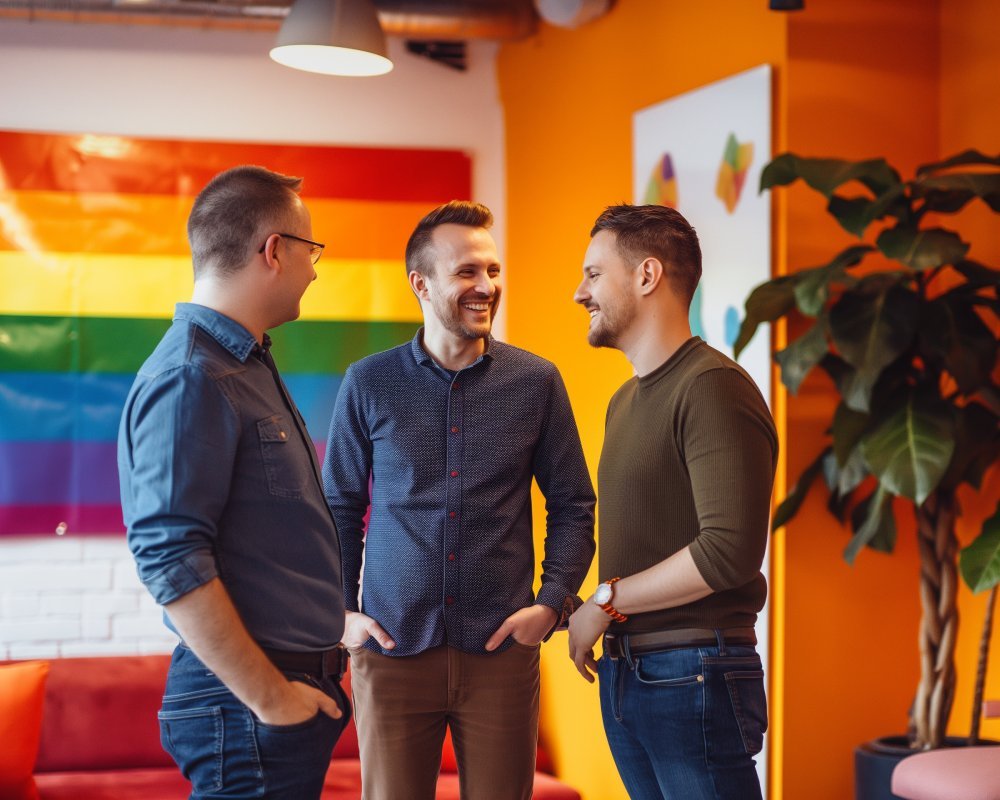
2. The Origins of LGBT History Month
2.1. How It All Began
LGBTQ+ History Month in the United States traces its roots back to 1994, when a Missouri high school teacher named Rodney Wilson believed there should be a month dedicated to teaching and learning about gay and lesbian history. Inspired by other awareness months (like Black History Month and Women’s History Month), Wilson organized with other teachers and activists to establish October as a period of reflection, education, and celebration for LGBTQ+ communities.
Their choice of October was strategic. It coincides with National Coming Out Day (October 11 in the U.S.), a day established in 1988 to encourage openness about one’s sexual orientation and gender identity as a means to reduce stigma. Additionally, October often aligns with school schedules, making it an ideal time for educational institutions to integrate LGBTQ+ topics into lesson plans.
2.2. Important Milestones in LGBTQ+ History
To fully appreciate why LGBT History Month exists, we must look at some of the key milestones that set the stage:
- Stonewall Riots (1969): Often regarded as the tipping point of the modern LGBTQ+ movement, a series of demonstrations by members of the LGBTQ+ community—particularly transgender women of color—against a police raid at the Stonewall Inn in New York City.
- First Pride Parade (1970): To commemorate the Stonewall Uprising’s first anniversary, activists in several cities organized marches demanding equal rights. This eventually evolved into what we now know as Pride Month and Pride Parades in June.
- Homosexuality Declassification (1973): The American Psychiatric Association removed homosexuality from its list of mental disorders, marking a crucial step toward destigmatization.
- AIDS Activism (1980s-1990s): Grassroots organizations like ACT UP (AIDS Coalition to Unleash Power) emerged, pushing for more funding, research, and compassionate healthcare amid the HIV/AIDS crisis, changing the conversation around queer health.
- Marriage Equality (2000s): Starting with the Netherlands in 2001, and culminating (in the U.S.) with the landmark Supreme Court decision in 2015, marriage equality laws have transformed the landscape of LGBTQ+ rights in many countries worldwide.
These milestones anchor the significance of LGBT History Month. By highlighting them, we remind current and future generations that the freedom to love openly, marry who we choose, or even discuss LGBTQ+ topics without legal repercussions was not always guaranteed.
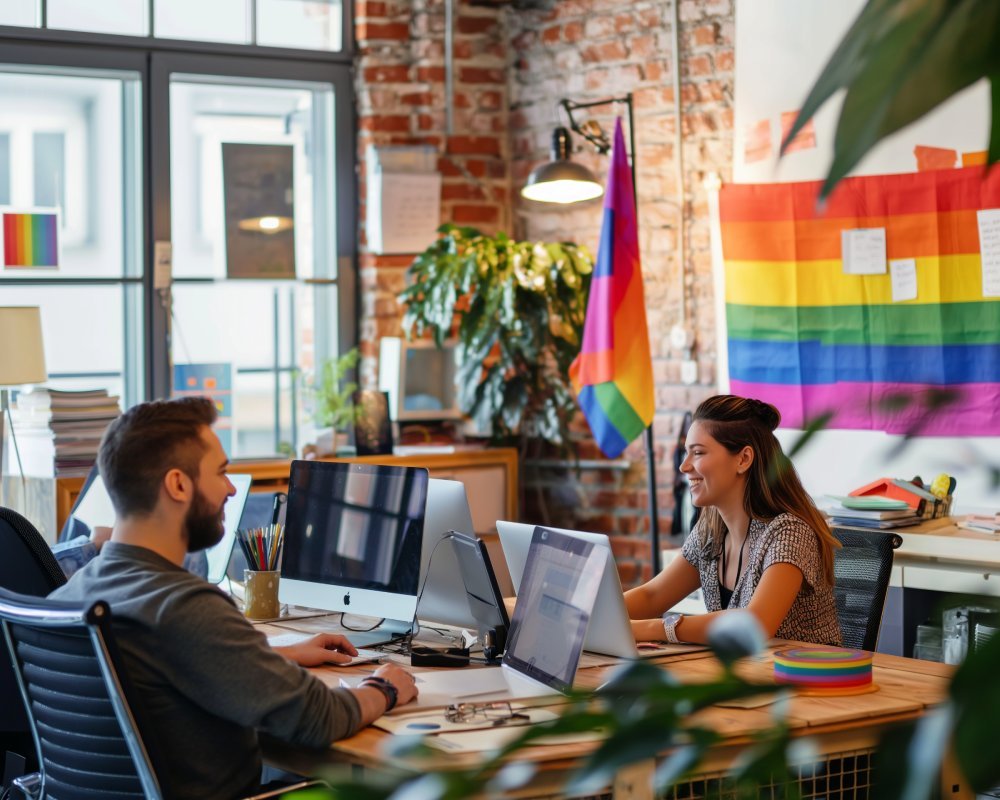
2.3. Foundational Events Leading to Gay History Month
Before Rodney Wilson’s efforts, smaller-scale events had championed the idea of dedicated spaces for LGBTQ+ history. Universities and grassroots organizations would hold “Gay Days” or “Gay Awareness Weeks,” especially around the anniversaries of pivotal moments like Stonewall or during Pride Month. However, these events were often localized and less formal.
In 1970, for instance, activists began referencing the Stonewall anniversary in public commemorations, leading to the first official Pride marches. Over time, these annual traditions gained traction, spotlighting the need for broader cultural recognition. By the 1990s, as more LGBTQ+ people came out publicly, calls grew louder for a month specifically dedicated to understanding our community’s past.
The inception of LGBT History Month provided a structured timeframe for educators, activists, and community leaders to collaborate. Exhibitions, panel discussions, documentary screenings, and guest speaker events became central. Ultimately, the month was about more than just awareness; it was—and continues to be—about cultural transformation, academic inquiry, and unifying diverse identities under the umbrella of shared history.
Advertisement · Scroll to continue
Recommended
3. What Is the Purpose of LGBTQ History Month?
3.1. Raising Awareness and Fostering Inclusion
One of the chief purposes of LGBT History Month is to enhance public understanding of the LGBTQ+ community’s historical struggles, contributions, and resilience. By dedicating a month to these stories, we counteract the erasure or misrepresentation that often occurs in mainstream historical narratives. Schools, colleges, libraries, museums, and community centers seize the opportunity to present exhibits, lectures, and resources that bring these sidelined narratives to the forefront.
For LGBTQ+ youth or adults who’ve never encountered positive portrayals of people like them in history lessons, this month can be a lifeline—affirming that they have a place in the ongoing story of humanity. For allies, it provides a structured moment to learn, engage in meaningful dialogues, and reflect on the privileges they hold.
3.2. Celebrating Diversity and Historical Contributions
Diversity within LGBTQ+ communities is immense, spanning multiple racial, ethnic, cultural, and religious backgrounds. One key goal during this month is to celebrate the multiplicity of queer experiences. For instance, we might learn about James Baldwin’s literary prowess and civil rights advocacy, or Frida Kahlo’s complex explorations of identity in her art, or Bayard Rustin’s critical contributions to the U.S. civil rights movement. These luminaries illustrate how LGBTQ+ people have profoundly shaped politics, arts, science, religion, and more.
Additionally, lesser-known stories also come to light—like that of Pauli Murray, a Black, queer legal scholar whose work influenced monumental rulings on race and gender equality, or Karl Heinrich Ulrichs, a 19th-century German lawyer considered by some to be the first person to publicly come out. By emphasizing such figures during LGBT History Month, we disrupt the narrative that history was solely shaped by heterosexual, cisgender individuals.
3.3. Educating the Wider Community
Education is a proactive tool against discrimination. When people understand the nuanced realities of LGBTQ+ history—from persecution to triumph—empathy tends to grow. Organizations often use this month to launch workshops and training sessions on topics like unconscious bias, inclusive language, and the historical roots of homophobia and transphobia. Such initiatives aim to create environments in which everyone—regardless of their sexual orientation or gender identity—feels welcome and respected.
Moreover, educational campaigns can illuminate the ways in which LGBTQ+ issues intersect with other social justice struggles. LGBTQ+ people who also belong to racial or religious minorities can face compounded discrimination, emphasizing the importance of intersectional solidarity.

4. When and How Is It Celebrated?
4.1. Month-by-Month Breakdown: UK vs. US
- United States: In the U.S., LGBT History Month is typically observed in October. This choice aligns with both the academic calendar and National Coming Out Day on October 11.
- United Kingdom: In the UK, LGBT History Month takes place in February, commemorating the abolition of Section 28 (a law that banned the “promotion of homosexuality” by local authorities) in 2003.
In other countries, the celebration dates might differ based on historical events and cultural contexts. Despite the variance in timelines, the essence remains consistent: a focus on education, commemoration, and visibility.
4.2. Traditions, Customs, and Global Celebrations
While there’s no single “correct” way to celebrate LGBT History Month, there are common customs:
- Academic Programs: Universities and schools often organize guest lectures, film screenings, or special curricula focusing on pivotal LGBTQ+ figures and moments in history.
- Art Exhibitions: Museums and galleries might showcase queer art or highlight the LGBTQ+ context of famous works, shining a spotlight on artists whose orientation or identity has been historically obscured.
- Panel Discussions: Community centers or non-profit organizations invite activists, historians, and public figures to discuss topics like intersectionality, the legal evolution of LGBTQ+ rights, and mental health within the community.
- Cultural Celebrations: Concerts, poetry readings, and drag performances might also be organized, particularly if the intention is to merge education with an engaging, celebratory atmosphere.
In many ways, LGBT History Month parallels other cultural or minority-focused heritage months, such as Black History Month or Women’s History Month, spotlighting a specific community’s narratives to promote understanding, acceptance, and policy change.

4.3. Engaging Institutions and Organizations
Government bodies, corporations, and nonprofits increasingly participate in LGBT History Month. For example, local councils might release statements or host community events championing LGBTQ+ inclusivity. Businesses may show support by highlighting influential LGBTQ+ employees or launching inclusion training. This institutional involvement helps normalize the celebration and integrate LGBTQ+ history into mainstream spaces.
However, while corporate or governmental participation can be beneficial, it must be accompanied by genuine commitments—like donating to LGBTQ+ charities, implementing inclusive policies, or revising educational materials. “Rainbow-washing,” where organizations superficially adopt rainbow flags without backing them up with real support, remains a concern. Transparency about motives and tangible contributions can ensure that LGBT History Month serves as more than a marketing opportunity.
5. Why Do We Have Two LGBTQ+ Months?
5.1. The Existence of Both Pride Month and LGBT History Month
A frequently asked question is: “Why do we have two months for LGBTQ+ representation—Pride Month in June and LGBT History Month (typically October in the U.S. or February in the UK)?” The answer is that each month serves a distinct purpose.
- Pride Month (June): Focuses on celebrating the progress made since the Stonewall Uprising in June 1969. It’s a tribute to LGBTQ+ activism and a time to reaffirm ongoing struggles, but with an emphasis on freedom, visibility, and the celebration of identity.
- LGBT History Month (October in the U.S., February in the UK): Dedicated primarily to education, historical reflection, and the commemoration of figures and events that shaped the community’s progress. It emphasizes how far we’ve come and lessons we can apply to ongoing advocacy.
5.2. Differentiating Pride From Historical Reflection
Although there is undoubtedly overlap in spirit—both months celebrate LGBTQ+ identities—Pride Month tends to spotlight the present, focusing on visibility, acceptance, and festivity. We see parades, parties, and large-scale events. By contrast, LGBT History Month is an invitation to dive deeper into the past. It’s a quieter, more introspective period often spent highlighting the bravery and stories of those who came before us.
When people ask, “Why do we have 2 months of LGBT?” the nuanced answer is that the community needs both. Pride Month reminds us of the ongoing activism and camaraderie, igniting hope and celebratory energy. LGBT History Month emphasizes the importance of studying and honoring historical narratives, from pre-Stonewall resistance to modern legislative victories. The synergy between the two fosters a well-rounded sense of identity—combining pride in who we are now with respect for the trailblazers who paved the way.
5.3. The Value of Dedicated Time for Both Celebration and Education
Multiple commemorative months can help sustain momentum. Social change doesn’t unfold in a vacuum, nor does it resolve itself in the span of a single month every year. By having two distinct, yet interconnected, periods for LGBTQ+ awareness, the community can more effectively:
- Engage Varied Audiences: Different individuals and institutions may connect better with one month over the other. Some might prefer the vivacity of Pride, while others resonate more with historical discussions.
- Address Various Needs: Pride Month frequently centers around activism and visibility, whereas LGBT History Month highlights the research, documentation, and storytelling essential to any movement’s longevity.
- Prevent Oversimplification: A single month can’t capture the full breadth of queer experiences. Having distinct times dedicated to celebration and historical reflection ensures more comprehensive coverage.
Ultimately, whether one focuses on Pride Month, LGBT History Month, or both, each offers valuable opportunities for education, alliance-building, and cultural transformation.

Advertisement · Scroll to continue
Recommended
6. What’s the Difference Between LGBT History Month and Pride Month?
6.1. Pride Month: Origins and Purposes
Pride Month commemorates the Stonewall Uprising of June 1969—a pivotal moment for the modern LGBTQ+ rights movement. It is a month of parades, festivals, and rainbow flags as far as the eye can see. The primary objectives of Pride Month include:
- Visibility: Encouraging LGBTQ+ individuals to come out (if safe and possible) and publicly celebrate their identity.
- Solidarity: Uniting the community and allies in a show of strength against homophobia, transphobia, and other forms of discrimination.
- Protest: Recognizing that Pride events have roots in protest—fighting for equal rights, recognition, and legislative reform.
Over the decades, Pride has grown into a massive, worldwide phenomenon, often incorporating corporate sponsors and mainstream media coverage. Yet, it continues to be a vital time of advocacy and self-expression. In many cities around the world, Pride events act as lifelines for marginalized queer people who may not otherwise see themselves celebrated in public spaces.
6.2. LGBT History Month: Focus and Significance
In contrast, LGBT History Month emerges from an academic tradition. While it celebrates LGBTQ+ identities, its emphasis lies in exploring historical contexts. Key differences from Pride Month include:
- Educational Programming: Many schools and universities create special curricula or hold workshops on LGBTQ+ history and related social issues.
- Legacy: It honors not just the Stonewall uprising but also centuries of LGBTQ+ presence that preceded it—from ancient civilizations to modern activism.
- Reflection: Instead of focusing primarily on parades and parties, LGBT History Month encourages deeper conversations, seeking to document and understand the paths taken to secure rights and recognition.
By contextualizing LGBTQ+ lives within broader historical narratives, LGBT History Month ensures that critical events—like early legal reforms, the decriminalization battles, and the emergence of the first support groups—are not forgotten.

6.3. Complementary, Not Redundant
Far from being redundant, Pride Month and LGBT History Month complement each other, offering dual lenses through which society can understand and support the LGBTQ+ community. Pride Month’s exuberance and widespread recognition can bring new allies into the fold and encourage quieter members of the community to step forward. LGBT History Month, on the other hand, sustains engagement through deeper exploration and academic discourse.
Together, they strengthen the community by reminding us that while we have much to celebrate, the fight for equality has a long and storied history deserving of study. This synergy ensures that as we march forward with Pride, we remain aware of whose shoulders we stand on—and how we can carry that legacy responsibly.
7. Key Figures and Stories in LGBTQ+ History
7.1. Trailblazers of Past and Present
A cornerstone of LGBT History Month involves honoring historical figures who broke barriers—often at great personal risk. Some names frequently highlighted include:
- Marsha P. Johnson: A Black trans woman and central figure in the Stonewall Riots, co-founder of the Street Transvestite Action Revolutionaries (STAR).
- Sylvia Rivera: Another pivotal trans activist, recognized for her relentless advocacy for LGBTQ+ youth and homeless trans women.
- Bayard Rustin: An openly gay African American civil rights leader who was a key advisor to Dr. Martin Luther King Jr., orchestrating the 1963 March on Washington.
- Audre Lorde: A Black lesbian poet and feminist who wrote extensively about the intersections of race, gender, and sexuality, illuminating systemic inequalities.
Their stories are not singular; each is representative of countless others whose work shaped the trajectory of LGBTQ+ rights. Many remained unsung heroes—such as community organizers, librarians, nurses, teachers—who quietly built networks of care and resistance in periods when open advocacy could mean jail time or worse.
7.2. Intersectional Voices and Contributions
The LGBTQ+ community is extraordinarily diverse, spanning myriad racial, cultural, religious, and socioeconomic backgrounds. Intersectionality plays a significant role here: the recognition that queer individuals can simultaneously experience racism, sexism, ableism, or religious discrimination. Celebrating intersectional voices helps dismantle the idea of a monolithic “gay experience” and highlights the multiple layers of oppression some queer people face.
During LGBT History Month, we often see increased efforts to shine a light on those who straddle multiple identities. Queer people of color, disabled individuals, transgender migrants, and other marginalized subgroups have unique histories that may not be well-documented in mainstream texts. The more we highlight these stories, the more inclusive and accurate our understanding of LGBTQ+ history becomes.
7.3. The Ongoing Need for Representation
Although representation of LGBTQ+ individuals has improved in films, television, and other media over the past few decades, misinformation and stereotypes persist. For decades, queer people have been portrayed as sidekicks, villains, or comedic relief. Authentic representation—especially of trans and non-binary persons—remains a constant struggle. LGBT History Month provides a platform for constructive criticism and encourages content creators to do better.
Moreover, representation matters in real life, too: it’s crucial for LGBTQ+ people to see themselves in the doctors, lawyers, scientists, artists, and leaders who shaped society. Visibility paves the way for young people to envision themselves in similar roles. By spotlighting major and minor figures each year, LGBT History Month affirms that the community has contributed (and continues to contribute) to every sphere of human endeavor.
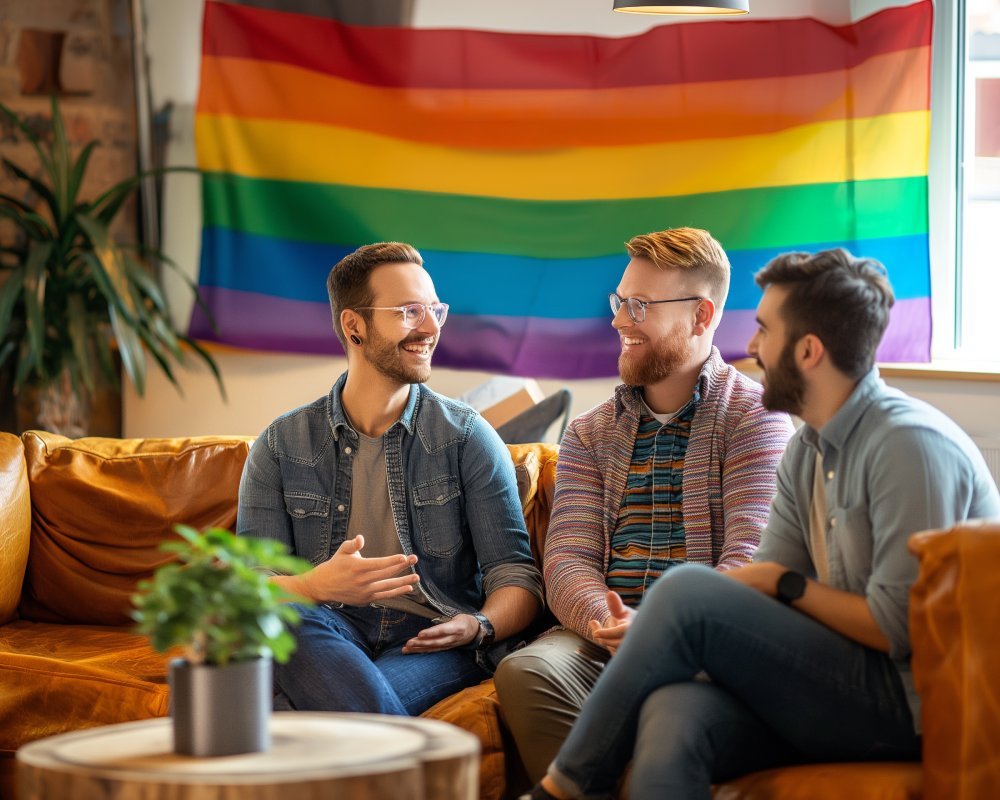
8. The Role of Education and Activism
8.1. Incorporating LGBTQ+ Curriculum in Schools
A significant part of LGBT History Month’s impact comes from how schools engage with the topic. In many places, LGBTQ+ history and experiences have been omitted or glossed over in official curricula. The introduction of inclusive lessons can help destigmatize queer identities and encourage acceptance among students of all orientations and genders.
Teachers might include modules on:
- Historical Figures: Discussing notable LGBTQ+ activists, artists, and leaders alongside their contributions.
- Social Movements: Examining the catalysts, challenges, and achievements of the modern LGBTQ+ movement.
- Allyship Skills: Presenting practical ways to support LGBTQ+ classmates, including how to use correct pronouns and inclusive language.
These approaches not only validate the experiences of LGBTQ+ students but also foster empathy and understanding across the student body. When schools recognize LGBT History Month, they signal that all identities are welcome and worthy of recognition.
8.2. From Stonewall to Today: Grassroots Activism
Activism lies at the heart of LGBTQ+ history. From clandestine networks that provided safe havens in times of severe persecution to massive Pride marches seen across global capitals, grassroots activism has been the engine of change.
- Stonewall Inn (1969): A pivotal moment where patrons of a gay bar resisted police raids, sparking an uprising that ignited the modern movement.
- ACT UP (1987): A direct-action advocacy group formed in response to government inaction on the AIDS crisis, famous for disruptive yet effective protests.
- Marriage Equality Campaigns (2000s): Organized efforts—led by coalitions of activists, lawyers, and supportive policymakers—that eventually led to legal same-sex marriage in numerous countries.
Each victory was borne of relentless determination, often from people on the margins—trans women of color, lesbians facing misogyny, and gay men in a hostile social climate—who demanded recognition. LGBT History Month pays homage to these activists and challenges us to continue their work in the face of ongoing discrimination.
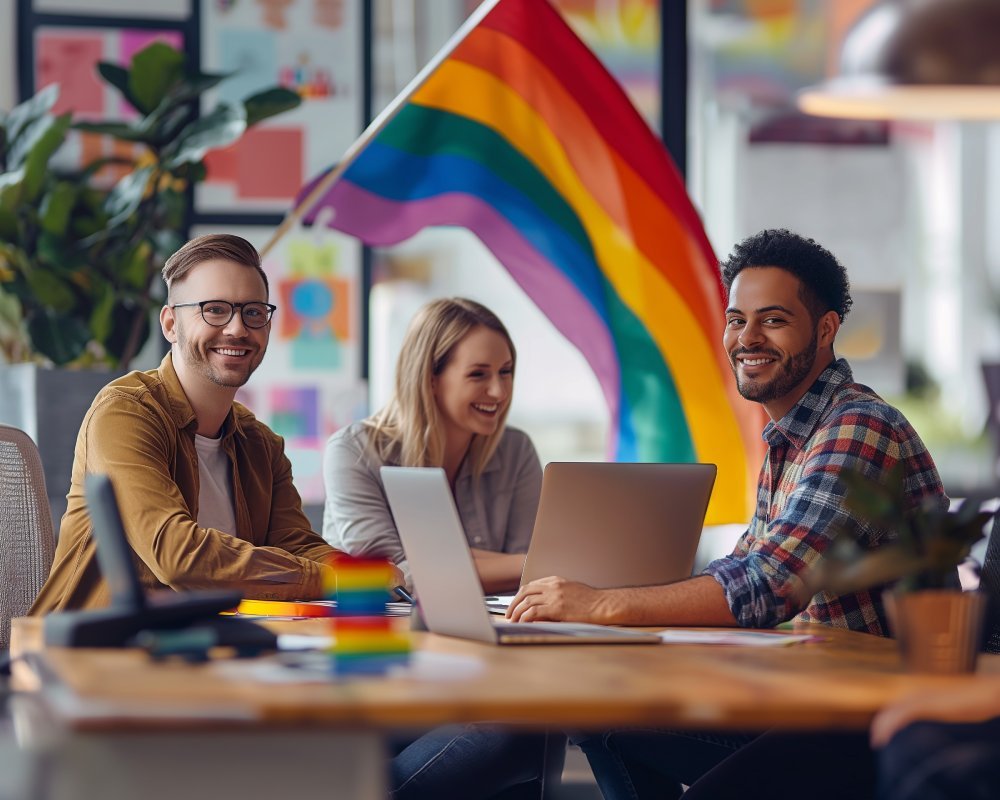
8.3. Building Allyship and Community Support
Education and activism don’t only apply to LGBTQ+ folks; allies play a pivotal role. This includes parents, friends, and colleagues who leverage their privilege to advocate for policy change, stand up to homophobic or transphobic remarks, and fundraise for community organizations. Allyship is an active, continuous process rather than a static identity.
During LGBT History Month, workshops or discussion panels often address how allies can be most effective, touching on topics like:
- Respectful Dialogue: Using inclusive language and understanding that making mistakes is part of learning, as long as one remains open to correction.
- Supporting Legislation: Voting for and championing laws that protect LGBTQ+ rights—such as anti-discrimination statutes, hate crime laws, or fair housing policies.
- Confronting Biases: Acknowledging that everyone can have biases and it’s our responsibility to unlearn prejudices.
Ultimately, education and activism ensure that LGBT History Month remains a dynamic, forward-leaning period rather than a passive commemoration. Historical knowledge guides us, but the call to action is ongoing.
9. Intersectionality and Inclusivity
9.1. Understanding the Complex Identities Within LGBTQ+ Communities
Intersectionality emphasizes that individuals can experience discrimination on multiple fronts simultaneously. For example, a Black, transgender woman may face not only transphobia but also racism and sexism. Recognizing these intersecting identities is crucial to creating truly inclusive LGBTQ+ spaces.
LGBT History Month often shines a spotlight on intersectional experiences because they’ve historically been either downplayed or ignored. Illustrative examples include:
- Two-Spirit People in Indigenous Cultures: Many Indigenous societies recognized diverse gender roles before colonial laws imposed rigid binaries, highlighting how cultural traditions can be a source of both oppression (when lost) and pride (when reclaimed).
- Lesbian Feminism: In the 1970s and ‘80s, lesbian feminists carved out spaces to address both misogyny in broader society and the patriarchal norms within gay male-dominated communities.
- Queer Immigrants: People seeking asylum due to sexuality- or gender-based persecution can face formidable legal barriers and culturally ingrained prejudices in their new countries.
By exploring these narratives, LGBT History Month encourages us to move away from one-dimensional storytelling, ensuring that every facet of the queer experience is acknowledged.
9.2. Race, Class, Ability, and Gender in Queer History
Historically, mainstream LGBTQ+ movements in the Global North have sometimes sidelined the concerns of people of color, the working class, and disabled individuals. This creates a fragmented sense of community, where certain groups might not feel adequately represented. Intersectional efforts aim to rectify that by:
- Centering Marginalized Voices: Platforms during LGBT History Month can feature BIPOC (Black, Indigenous, and People of Color) voices, disabled queer activists, and trans and non-binary people, ensuring that their experiences shape communal agendas.
- Addressing Class Disparities: Poverty and housing insecurity disproportionately affect LGBTQ+ individuals. Grassroots activism often focuses on mutual aid, free healthcare clinics, and crisis hotlines for vulnerable community members.
- Advocating for Accessibility: Making events, resources, and discussions accessible to disabled persons (e.g., providing sign language interpretation, wheelchair-accessible venues, and alt-text for images) fosters truly inclusive spaces.
Highlighting these interwoven identities and struggles fosters a deeper comprehension of how oppression and privilege operate within LGBTQ+ circles.
9.3. Why Intersectional Approaches Matter
When organizations or activists adopt intersectional frameworks, they recognize that LGBTQ+ liberation can’t be fully achieved unless all segments of the community are free from discrimination. Intersectionality extends solidarity beyond a single axis of identity, forging coalitions that are more robust and far-reaching.
By including intersectionality in LGBT History Month activities—be it lectures, panel discussions, or exhibitions—we ensure that the “history” we present is authentic and reflective of the community’s diversity. In doing so, we honor the complexity of individuals’ lives rather than pigeonhole them into one dimension of identity. This approach strengthens the collective bond among different groups and prevents the perpetuation of marginalizing practices within LGBTQ+ spaces.
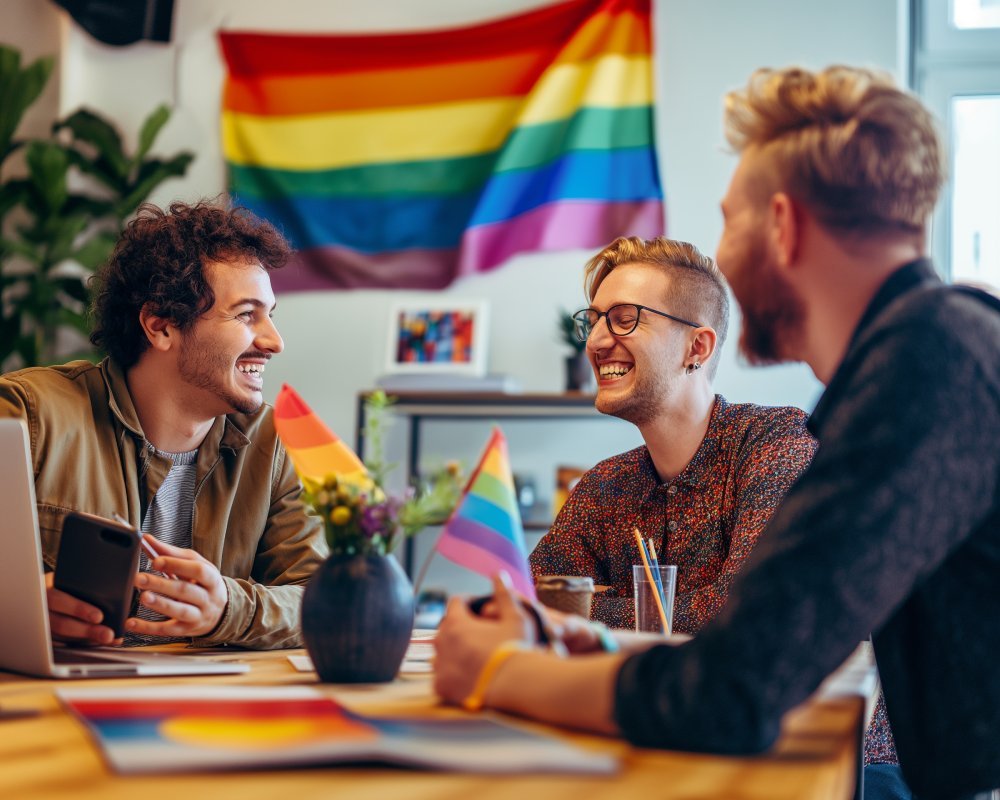
10. Common Ways to Celebrate LGBTQ+ History Month
10.1. Educational Panels, Exhibitions, and Workshops
One of the most straightforward and effective ways to honor LGBT History Month is through education:
- Panels: Universities, community centers, and advocacy groups invite historians, activists, and cultural commentators to discuss crucial events and figures in LGBTQ+ history. This interactive format encourages audience participation and Q&A sessions.
- Exhibitions: Curated exhibits in libraries or galleries highlight queer art, historical documents, or personal artifacts, illustrating how LGBTQ+ life has evolved over time.
- Workshops: Sessions on topics such as “Understanding LGBTQ+ Terminology,” “Intersectionality 101,” or “Allyship Training” help attendees gain deeper insights and practical skills.
10.2. Media Representation and Cultural Events
Thanks to social media and streaming platforms, it’s now easier to find LGBTQ+ content across various media:
- Film Screenings: Venues might host screenings of documentaries (e.g., Paris Is Burning, The Death and Life of Marsha P. Johnson) or narrative films that shine light on queer stories.
- Book Clubs: Community-run reading circles discuss LGBTQ+ literature or historically significant works by queer authors, sometimes with the authors themselves as guest speakers.
- Performance Art: Music, theater, drag shows, and poetry readings can all be themed around historical moments or the experiences of queer communities.
By engaging with these forms of expression, audiences gain not only entertainment but also education on nuanced aspects of LGBTQ+ life, such as the interplay of gender, sexuality, and culture.
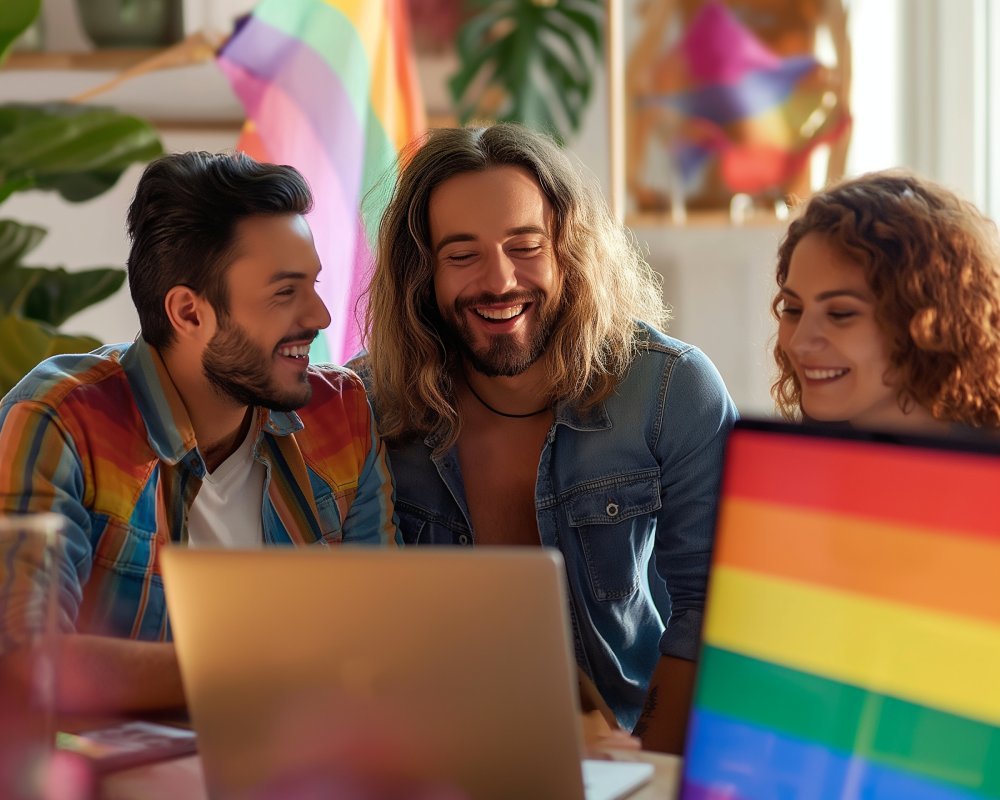
10.3. Community Outreach, Volunteering, and Mutual Support
LGBTQ+ organizations frequently need volunteers, particularly smaller nonprofits that provide essential services (like healthcare advice, mental health counseling, or support for homeless youth). Dedicating time during LGBT History Month to volunteer can be a powerful way to connect with the community and help sustain vital resources. Additionally:
- Donation Drives: From clothing to food drives, community-led efforts can make a huge difference, especially for vulnerable populations like trans youth and LGBTQ+ seniors.
- Support Groups: Some groups hold special sessions or retreats geared towards educating members about their collective history, building pride and cohesion.
- Peer Mentorship: Pairing older LGBTQ+ individuals who’ve experienced different historical eras with younger community members fosters intergenerational learning and empathy.
These real-world acts embody the core spirit of LGBT History Month: uniting to remember the past, tackle present challenges, and lay the groundwork for a more equitable future.
11. Frequently Asked Questions (FAQs)
11.1. Clarifying Misconceptions
- Is LGBT History Month just for LGBTQ+ people?
Not at all. While it is a time for queer folks to celebrate and reflect, allies and the broader community are encouraged to participate. The month’s educational initiatives often aim to break down barriers and invite everyone to learn and engage. - Do other countries observe LGBT History Month?
Yes. Although the U.S. and UK might be the most prominent examples, other countries have varying ways of commemorating LGBTQ+ history, influenced by their unique cultural and political contexts. Some nations place more focus on local historical figures or events, while others tie it to larger, international celebrations. - Why do people sometimes call it “Gay History Month” instead of “LGBT History Month”?
Terminology evolves over time. Historically, movements began with the term “gay liberation,” but as understanding expanded, “LGBT” and eventually “LGBTQ+” gained prominence to be more inclusive. Some still say “Gay History Month” out of habit or simplicity, but the broader acronym acknowledges lesbians, bisexuals, transgender people, and more. - Is it politically charged or controversial?
In some regions, discussing or celebrating LGBTQ+ topics remains politically contentious. Opposition can arise from conservative religious or political groups. Nonetheless, for those who support equality and human rights, LGBT History Month is a critical platform for visibility, education, and social progress.
11.2. Tips for First-Time Celebrants
- Start Small: If you’re new to LGBT History Month, begin by reading articles or watching documentaries about key events.
- Engage in Dialogue: Speak with friends or colleagues who might have more experience. Attend online or in-person panel discussions.
- Reflect: Think about how LGBTQ+ history intersects with your own cultural background or personal values.
- Be Open to Learning: Mistakes and questions are natural. Maintaining a respectful, curious mindset is key.
11.3. Resources and Further Reading
- Online Archives: Websites like the GLBT Historical Society (U.S.) or Bishopsgate Institute (UK) house extensive digital archives.
- Libraries: Many local libraries curate special collections during LGBT History Month, making it easier to find relevant books, magazines, and DVDs.
- Academic Journals: Publications such as Journal of Homosexuality or GLQ: A Journal of Lesbian and Gay Studies offer in-depth research articles.
- Community Organizations: Nonprofits like Stonewall (UK) and the Human Rights Campaign (U.S.) frequently publish educational materials and host events.
These resources help deepen your knowledge, connecting historical narratives to contemporary policy debates and cultural shifts.

12. Conclusion – What Is Gay History Month?
12.1. The Ongoing Journey for LGBTQ+ Liberation
LGBT History Month is more than a set of dates on the calendar—it’s a testament to resilience and the ongoing battle for human rights. Each generation stands on the shoulders of those who confronted discrimination, bigotry, and violence to create a more equitable society. Yet, even in 2025 and beyond, challenges remain. Issues like transphobic legislation, conservative backlash, the underrepresentation of LGBTQ+ people of color, and the persecution of queer communities in certain parts of the world underscore the importance of continued activism.
12.2. The Importance of Commemorative Months
Designated months dedicated to cultural or social groups—be it LGBT, Black, Women’s, or Indigenous—serve vital social functions. They act as institutionalized reminders, prompting us to reflect on histories that mainstream narratives often overlook. By delving into the past, we gain insights into how oppressive structures form and how they can be dismantled.
LGBT History Month stands out because it merges education, historical commemoration, and community celebration. It bridges the gaps between generations, ensuring that young LGBTQ+ folks know they are part of a powerful lineage and that allies see the depth and diversity of this community’s contributions. Having a set period for exploring these stories allows the conversation to maintain momentum in media, schools, and community spaces year after year.
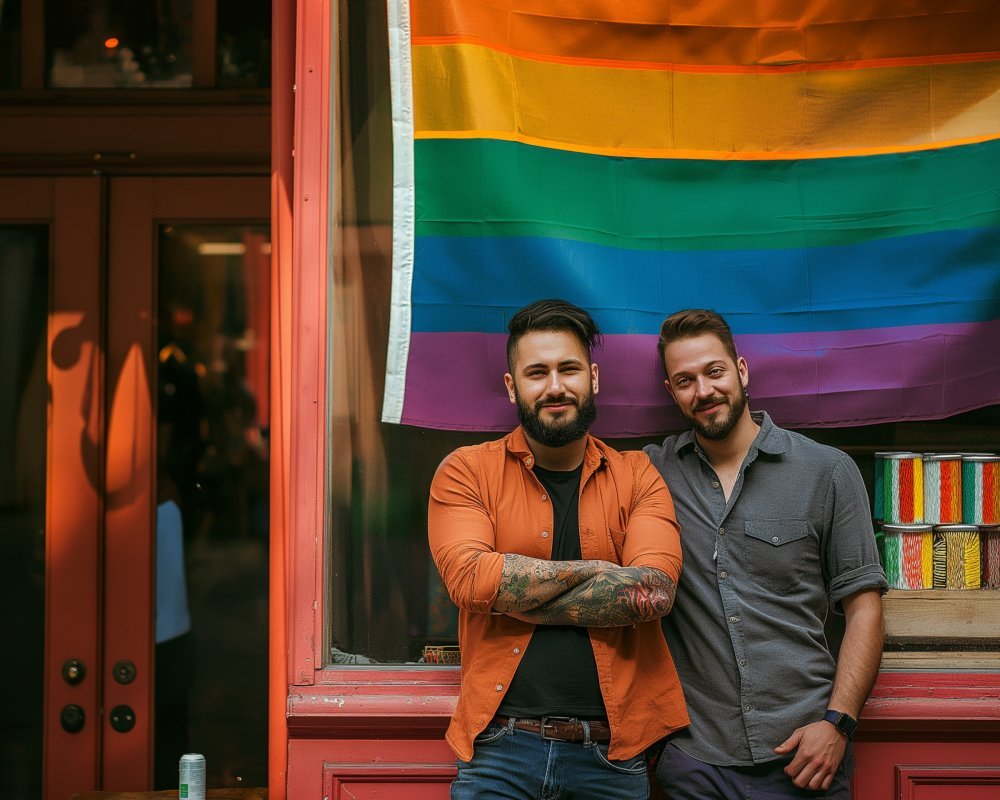
12.3. Final Thoughts and Calls to Action
Ultimately, the goal of LGBT History Month—and indeed, Pride Month as well—is to foster a society in which queer identities are understood, accepted, and valued. This requires collective effort:
- Learn: Dive deeper into LGBTQ+ history, from ancient eras to modern times.
- Support: Donate to LGBTQ+ charities, attend local events, and mentor younger community members or new allies.
- Advocate: Speak out against discriminatory laws and policies. Voting, petitioning, and protesting remain powerful tools for social change.
- Celebrate: Joy and celebration are potent forces for resilience. Whether it’s a panel discussion on LGBTQ+ historical icons or a local Pride event, being seen and being joyful can be revolutionary acts.
In a world where information can be fleeting, devoting a month to LGBT history grounds us, reminding us of how far we’ve come and how far we still have to go. For every individual discovering their identity, for every ally looking to expand their understanding, for every activist striving for justice—LGBT History Month is a beacon. It’s an invitation to learn, to celebrate, and to remember that we all have roles to play in the ongoing journey toward inclusivity.
13. Deep Dive: The International Context of LGBT History Month (Approx. 800 words)
While the focus on LGBT History Month often highlights the U.S. and the UK, many countries around the world have their own traditions and timelines. In Australia, for instance, Wear It Purple Day (held in August) focuses on LGBTQ+ youth. In Canada, Pride Season can stretch from June until September in some provinces. Meanwhile, Brazil has its largest Pride parade in São Paulo, often in June, but some localities offer historical retrospectives throughout the year.
- Latin America: Countries like Argentina and Brazil have robust LGBTQ+ movements influenced by Catholic traditions and a history of dictatorships that suppressed dissent. LGBTQ+ activists often link their cause with broader human rights agendas, addressing racial and economic disparities alongside sexual orientation and gender identity issues.
- Africa: While many African countries still criminalize same-sex relationships, grassroots organizations and activists strive to document LGBTQ+ histories. Their work is crucial in regions where colonial-era anti-sodomy laws remain prevalent.
- Asia: From Taiwan’s legalization of same-sex marriage to India’s partial decriminalization of homosexuality (Section 377), Asia presents a mosaic of legal landscapes. Celebrations, if they occur, might be underground or online. Historical events like the “Tongzhi” (同志) movement in Hong Kong or Japan’s cultural traditions around genderfluid samurai (wakashu) add layers to the global story of LGBTQ+ identity.
Exploring these international facets during LGBT History Month broadens our perspective, reminding us that queer life, culture, and resistance are neither new nor Western phenomena. They’re woven into the social and historical fabric of cultures worldwide.
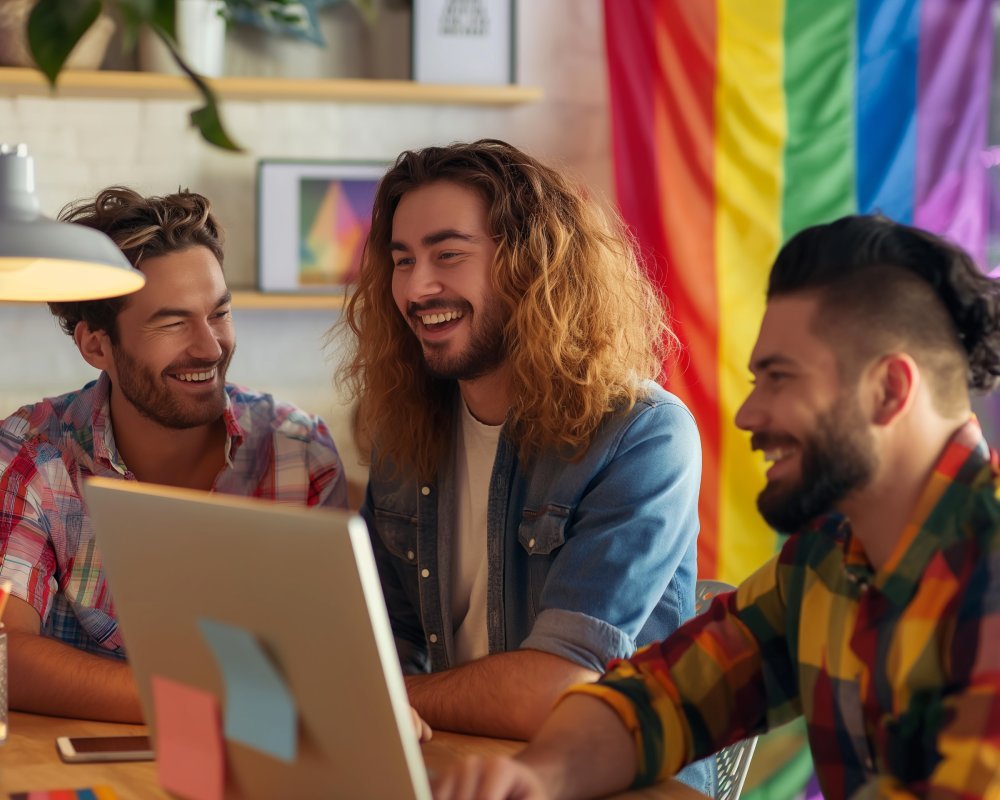
14. Legal Landscapes and Ongoing Struggles
Despite progress, challenges remain rife:
- Criminalization: Over 60 countries still criminalize same-sex acts, with punishments ranging from fines to imprisonment or even the death penalty in extreme cases.
- Trans Rights: While trans visibility has increased, legislative protections lag. Many countries lack legal recognition for trans and non-binary individuals, complicating everything from ID documentation to healthcare access.
- Religious Exemptions: In some places, religious freedom is invoked to justify denying services or employment to LGBTQ+ individuals, sparking controversies and legal battles over balancing religious rights with anti-discrimination laws.
- Hate Crimes: Violence against LGBTQ+ communities remains a global crisis. The data on hate crimes is often underreported due to fear or mistrust of law enforcement.
Understanding these legal and societal barriers is integral to LGBT History Month because it contextualizes the experiences of those who lived (and continue to live) in fear. Many stories from the past revolve around secret networks, coded language, and courageous defiance against unjust laws. By connecting past struggles with present realities, we harness the lessons of history to inform today’s advocacy.
15. The Evolution of Queer Media
Representation in media has evolved dramatically:
- Early Depictions: Silent-era films occasionally showed characters or actors who might be interpreted as queer, but explicit acknowledgment was taboo. The Hays Code in Hollywood (1930s-1960s) censored depictions of homosexuality, relegating them to villainous or tragic roles if shown at all.
- Gay Liberation Era: Post-Stonewall, independent and art-house films began portraying more authentic experiences. Literary works, such as Rita Mae Brown’s Rubyfruit Jungle, gained traction, signaling a shift toward openly queer narratives.
- Mainstream Breakthroughs: The 1990s brought us shows like Ellen and Will & Grace, while films like Philadelphia tackled AIDS and prejudice head-on. In 2020s media, transgender actors and storylines increasingly appear in shows like Pose and Euphoria.
- Online Spaces: Social media platforms allow queer creators to bypass traditional gatekeepers, producing web series, podcasts, and Instagram content that speak directly to younger generations.
During LGBT History Month, examining these shifts underscores how cultural acceptance often trails behind legislative progress. Media representation can serve as both a barometer of societal views and a catalyst for change. Celebrating the historians, writers, directors, and performers who broke boundaries is a pivotal part of commemorating LGBTQ+ heritage.

16. Corporate Responsibility and Rainbow Capitalism
Pride and LGBT History Month have become marketable events for corporations eager to display rainbow logos. While corporate sponsorship can amplify messages and fund crucial programs, critiques arise when companies fail to support LGBTQ+ rights year-round. This dichotomy is sometimes called “rainbow capitalism,” where the commercial value of queer acceptance is exploited without concrete policy changes or philanthropic endeavors benefiting the community.
- Positive Engagement: A truly inclusive corporation enacts internal policies protecting LGBTQ+ employees, sponsors community initiatives beyond marketing stunts, and has zero-tolerance policies for discrimination.
- Pinkwashing vs. Advocacy: “Pinkwashing” refers to using LGBTQ+ support as a public relations tool to distract from unethical practices elsewhere (e.g., labor violations, environmental harm). Genuine advocacy, however, involves consistent involvement—like hosting events during LGBT History Month, funding scholarships for queer students, or partnering with nonprofits on anti-bullying campaigns.
Highlighting these complexities during LGBT History Month encourages informed consumer choices. Consumers and activists alike can hold companies accountable, demanding that rainbow logos be matched by real, year-round commitments to equality.
17. Personal Reflection and Storytelling
Beyond lectures and panels, oral histories and personal narratives are another cornerstone of LGBT History Month. Each individual story—be it a grandparent recounting life under oppressive sodomy laws or a teenager navigating high school—adds texture to our collective understanding.
- Coming Out Tales: National Coming Out Day (October 11) within LGBT History Month in the U.S. creates a space for sharing personal journeys. These stories can be inspiring, painful, or triumphant—but they reinforce the idea that being visible changes cultural perceptions.
- Family Acceptance: For many LGBTQ+ people, family acceptance is a key factor in mental health and well-being. Discussing generational shifts (from families disowning queer children to families marching alongside them in Pride) can illustrate the broader social transformations over time.
- Legacy Projects: Some communities host “legacy dinners” where elders share experiences with younger attendees. This fosters intergenerational solidarity, a crucial element in sustaining movements.
In many ways, these intimate reflections form the bedrock of what LGBT History Month aspires to achieve: bridging the gap between abstract historical timelines and the lived realities of individuals.
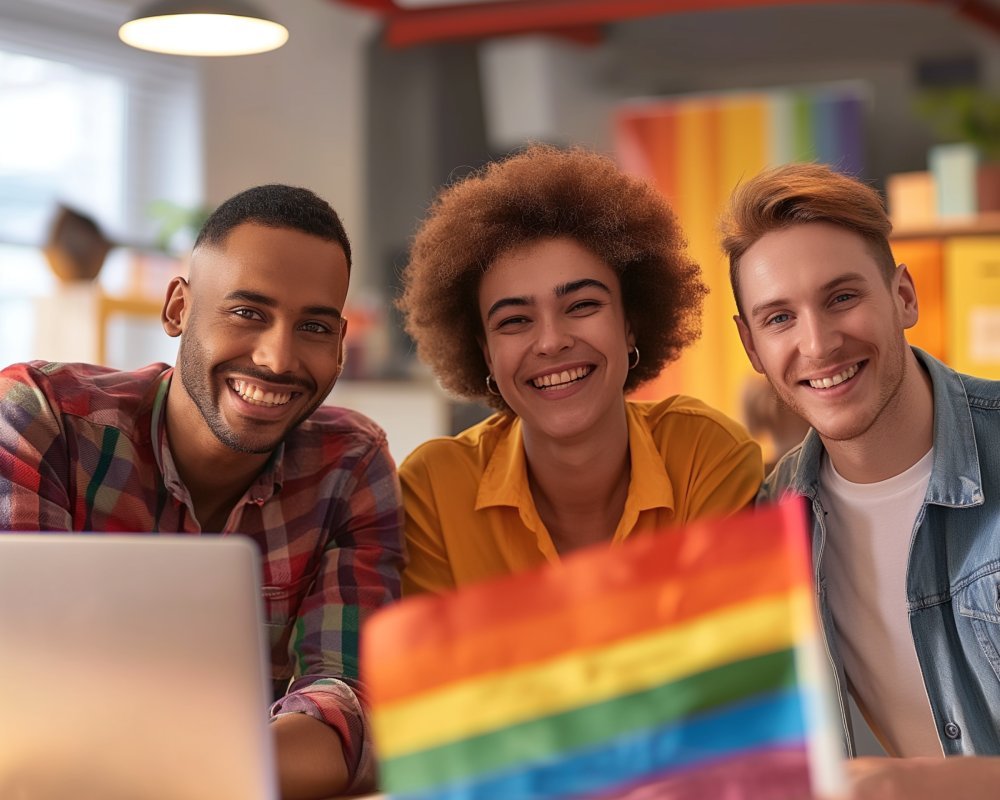
18. Actionable Steps for the Future
Concluding this extended exploration, let’s focus on tangible next steps:
- Promote School Inclusion: Campaign for inclusive curricula that highlight LGBTQ+ figures, historical events, and cultural artifacts. Advocate that local school boards adopt explicit policies ensuring LGBTQ+ students feel safe and valued.
- Engage in Public Policy: Identify local legislative issues, from anti-LGBTQ+ “bathroom bills” to comprehensive anti-discrimination measures. Mobilize your community to attend town halls, write to representatives, or organize peaceful demonstrations.
- Empower Media Literacy: Encourage critical discussions around representation in movies, TV shows, and books. Challenge harmful stereotypes and support creators who uplift nuanced queer stories.
- Support Global Movements: Recognize that many LGBTQ+ communities worldwide face greater dangers due to repressive laws. Contribute to organizations working on international advocacy, refugee resettlement, or decriminalization efforts.
- Create Shared Spaces: Collaborate with local LGBTQ+ centers or community groups to establish free or low-cost meeting spaces—enabling everything from youth drop-in programs to historical archives.
By merging historical insight with an active vision for tomorrow, LGBT History Month becomes a springboard for sustained transformation. It ensures that each generation inherits not just the stories but the strategies that have proven effective—and the wisdom to adapt them to ever-changing landscapes.
In Closing
LGBT History Month—whether observed in October, February, or another time—serves as a beacon of knowledge and remembrance. It’s a moment for honoring the architects of change, from early activists who risked everything for visibility to modern champions of trans rights, racial equity, and global solidarity. In paying tribute to these histories, we invigorate ourselves for the ongoing quest to secure equal rights, respect, and dignity for all members of the LGBTQ+ community.
By committing to education, embracing intersectionality, championing policy reform, and celebrating cultural achievements, each of us can partake in shaping a world where queer stories are no longer marginalized footnotes—but essential chapters in our shared human saga.
Advertisement · Scroll to continue

More Recommended
What Does an Anal Orgasm Feel Like? An LGBTQ+ Guide
What Does an Anal Orgasm Feel Like? An LGBTQ+ Guide When it comes to pleasure, [...]
The Power of Gay Representation in the Arts
The Power of Gay Representation in the Arts – Representation matters. In the LGBTQ+ community, [...]
Creating Authentic Connections: The Importance of Representation in Lesbian Marketing
Creating Authentic Connections: The Importance of Representation in Lesbian Marketing The marketing world is constantly [...]
What is the least racist country?
What is the least racist country? – Exploring the question “What is the least racist [...]
Gay Rights Movement: What Is Gay Activism?
Gay Rights Movement: What Is Gay Activism? A Comprehensive Exploration of LGBTQ+ Movements, History, and [...]
Olivia Cruises 2025 Prices: The Ultimate Guide
Olivia Cruises 2025 Prices: The Ultimate Guide for LGBTQ+ Travelers 1. Introduction to Olivia Cruises [...]
Have You Ever Considered Going on a Lesbian Cruise?
Have You Ever Considered Going on a Lesbian Cruise? Are you looking for a unique [...]
Benefits of Advertising to Queer Audiences?
Benefits of Advertising to Queer Audiences? In today’s increasingly diverse and inclusive world, advertising to [...]
Inclusive Marketing: How Brands are Embracing LGBTQ+ Audiences
Introduction Inclusive marketing is a crucial aspect of any successful business strategy in today’s diverse [...]